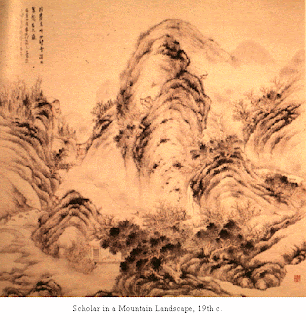منطق الطير ، قصة جميلة جدا لفريد الدين العطار على لسان الطيور التي نوت أن تبحث عن ملك عادل وكامل لها..
طائر السيمرغ - أو معادله - موجود في كثير من الأساطير الآرية القديمة ،( الإسم القديم سينامرغا ) ، وقد عدّل العطار الإسم لكي يصير هكذا ، ويعني 30 طائرا (وهو عدد الطيور هنا)
يقودها الهدهد، محاولا إقناعها بالذهاب إلى جبل قاف، مكان إقامة السيمرغ ...
في سيرها نحو السيمرغ تمرّ الطيور بأودية السلوك السبعة ومرت علي
التوالي بوادي الطلب ووادي العشق ووادي المعرفة ووادي الاستغناء ووادي
التوحيد ووادي الحيرة ووادي الفقر والفناء...
الخاتمة رائعة ...
 |
| في الطريق إلى طائر السيمرغ |
 |
| منمنمة - الهدهد مخاطبا الطيور - منطق الطير |
قصة ثانية جميلة من نتاج العطّار وهي قد وردت بصيغ مختلفة ..حيث يروي العطار عن ملك يطلب من جمع من الحكماء أن يصنعوا له خاتماً
يجعله سعيداً حين يكون مهموماً، والعكس صحيح. وبعد مداولة، أعطاه النساك
خاتماً بسيطاً وقد نـُقش عليه الكلمات "لا شيء يدوم"، فكان لها الأثر
المطلوب..
ترد القصة بصيغة أخرى أحيانا عن ملك طلب من وزيره أن يصنع له خاتما تجعل رؤيته الحزين سعيدا، وتجعل السعيد حزينا، كما ترد القصة في الفلكلور اليهودي بصفتها حدثت مع النبي سليمان.
في الصيغة الإنكليزيّة الكلمات هي :
This Too Shall Pass
بمعنى ، "هذا أيضا سيزول "، وهو مناسب أكثر من الترجمة العربية المستخدمة عادة (لا شيء يدوم) ، وأكثر جماليّة
ترد القصة بصيغة أخرى أحيانا عن ملك طلب من وزيره أن يصنع له خاتما تجعل رؤيته الحزين سعيدا، وتجعل السعيد حزينا، كما ترد القصة في الفلكلور اليهودي بصفتها حدثت مع النبي سليمان.
في الصيغة الإنكليزيّة الكلمات هي :
This Too Shall Pass
بمعنى ، "هذا أيضا سيزول "، وهو مناسب أكثر من الترجمة العربية المستخدمة عادة (لا شيء يدوم) ، وأكثر جماليّة
قال فريد الدين العطّار :
شكراً للّه، فلم ألجأ إلى قصر، ولم أكن ذليلاً لحقير، ولم أطعم خبز ظالم، ولم اختم كتاباً بذكر احدهم مطلقاً
مات بعد عزلة إختياريّة وقال (نقلا عن القزويني) :
يقولون عني: ما له قد آثر العزلة... نعم لا صديق لي بين الخلق واني وان كنت افعل ذلك فلانني في الطبع كمالك الحزين.
 |
| تمثال العطّار |













